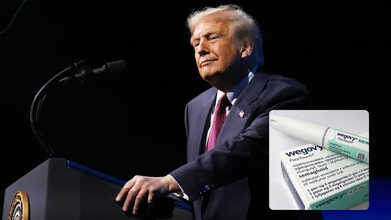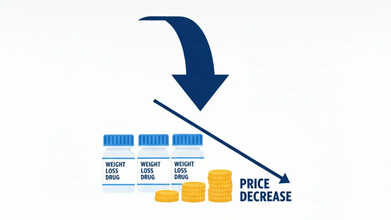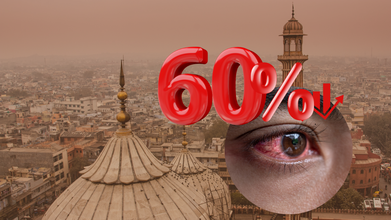- Health Conditions A-Z
- Health & Wellness
- Nutrition
- Fitness
- Health News
- Ayurveda
- Videos
- Medicine A-Z
- Parenting
- Web Stories
Cholera Outbreak In Sudan: Killed Over 60 People, 1,300 Remain Sick

Credits: Canva
Sudan is experiencing a cholera outbreak in its southern cities, which has till now killed nearly 60 people and sickened around 1,300 others in the last three days. The outbreak is reported from the southern city of Kosti. As per the health ministry, this happened mainly due to contaminated drinking water after the city's water supply facility was knocked out during an attack by paramilitary ground. As per the reports, this paramilitary group has been fighting the country's military for about 2 years now.
The health ministry also said in its statement that the disease killed around 58 people and sickened 1,293 others between Thursday and Saturday in Kosti. The ministry has also ensured that measures have been taken to fight the outbreak. Among these measures, the major effort is to launch a vaccination campaign for cholera in the city. Isolation centers have also been built in cooperation with the United Nations and other international medical groups and the capacity has been expanded. Doctors without Borders are also working together for the same and have established its cholera treatment center in Kosti Hospital. However, due to a surge in cases, the center is overwhelmed and are facing issues in providing additional space by using up adult and pediatric emergency rooms.
“The situation is really alarming and is about to get out of control," said Dr. Francis Layoo Ocan, the group's medical coordinator in Kosti. “We’ve run out of space, and we are now admitting patients in an open area and treating them on the floor because there are not enough beds.”
The Source Of Infection
As per the reports, the source of infection is most likely the White Nile River as many families directly bring water from it, which is also the reason for a major power outbreak in the area. However, local authorities have banned residents from collecting water from the river and have reinforced chlorination in the water distribution system.
Cholera In Past
In the past too, the disease killed over 600 people and sickened over 21,000 in Sudan between July and October in 2024. Last year, it affected in country's eastern areas and thus many people from there were relocated. In 2017, Sudan faced another major outbreak, killing 700 people and leaving 22,000 people sickened.
What is Cholera?
As per the World Health Organization (WHO), it is an acute diarrheal infection which is caused by consuming contaminated food or water. The food or water is contaminated with bacterium Vibrio cholerae. As per the WHO, it is a global public health threat and also highlights the inequity and lack of social and economic development. As access to safe water is one of the sustainable development goals, thus it reflects on how poorly the world is divided when it comes to SDG's implementation.
While the disease has been known for many centuries now, the first pandemic or global epidemic for this disease was recorded in the 19th century. Since then, 6 pandemics have killed many people worldwide, the current one, (seventh) started in South Asia in1961 and continues to affect populations globally, WHO notes.
WHO recommends treating people with ORS or the oral rehydration solution. However, there are chances that the disease may progress rapidly, thus the treatment at an early stage is important. Patients with severe conditions may need intravenous fluids along with ORS and antibiotics.
Symptoms
Cholera can be fatal, notes WHO, if it goes untreated for hours. The symptoms usually appear 12 hours to 5 days after the infection, which includes acute watery diarrhea and dehydration.
Trump Strikes Agreement To Cut Costs of Popular Weight Loss Drugs: All You Need to Know

Credits: Canva
Trumprx: President Donald Trump on Thursday unveiled agreements with Eli Lilly and Novo Nordisk aimed at cutting the prices of some of their obesity medications, including upcoming pills. The move is designed to make these expensive, blockbuster treatments more accessible to Americans.
Trump Announcement Today: GLP-1 Drugs to Become Affordable for Medicare and Medicaid Beneficiaries
The deals will reduce costs for GLP-1 drugs for Medicare and Medicaid recipients starting in 2026. The Trump administration also plans to sell the medications directly to consumers at a discount via a new website, TrumpRx.gov, launching in January. For the first time, Medicare will cover obesity treatments, which could encourage private insurers to follow suit. Certain Medicare patients will pay just $50 per month for all approved GLP-1 therapies, including those for diabetes and obesity, as per USA Today.
Trumprx: Wegovy, Zepbound, and Upcoming Pills Set for Price Cuts
Starting doses of upcoming obesity pills from Eli Lilly and Novo Nordisk, pending approval, will cost $145 per month for those using Medicare, Medicaid, or TrumpRx. Novo Nordisk’s oral version of Wegovy may enter the market by year-end, while Eli Lilly’s pill, orforglipron, could launch next year. Existing injections, such as Wegovy and Zepbound, will be available at $350 per month on TrumpRx, trending down to $245 per month over two years, as per NBC News.
Trump highlighted that these drugs have rarely been covered by Medicaid and were previously not covered by Medicare for weight loss. “They’ve often cost consumers more than $1,000 per month… That ends starting today,” he said.
Trump Announcement: Most Favoured Nation Policy Expands Access
The announcements are part of the Trump administration’s ongoing push to tie U.S. drug prices to the lowest international costs under the most favored nation policy. Trump has previously reached similar deals with Pfizer, AstraZeneca, and EMD Serono.
HHS Secretary Robert F. Kennedy Jr. said this move will have a “dramatic effect on human health,” noting that all Americans, including those not on Medicaid or Medicare, will benefit from lower GLP-1 drug prices.
Eligibility and Coverage Under Medicare
- Medicare coverage will prioritize three groups:
- Overweight patients (BMI >27) with prediabetes or cardiovascular disease.
- People with obesity (BMI >30) and uncontrolled hypertension, kidney disease, or heart failure.
- Individuals with severe obesity (BMI >35).
About 10% of Medicare beneficiaries are expected to qualify for GLP-1 therapy for obesity, cardiovascular, and metabolic benefits.
Eli Lilly and Novo Nordisk Commit To Expanded Discounts
Eli Lilly and Novo Nordisk also agreed to extend lower government pricing to all 50 Medicaid programs, provide most favored nation pricing on new medicines, and offer similar discounts on their existing drugs via TrumpRx.
Eli Lilly will additionally reduce prices on its direct-to-consumer platform, LillyDirect, where Zepbound will be available starting at $299 per month for the lowest dose. Eli Lilly’s upcoming pill will start at $149 per month.
Background on Obesity Drug Coverage
Previous efforts to cover obesity drugs under Medicare, including a proposal by former President Joe Biden, were not finalized due to costs and controversy. Health experts argue that broader access could reduce long-term expenses related to obesity-related conditions.
Semaglutide is also slated for Medicare price negotiations under the Inflation Reduction Act, while tirzepatide, the active ingredient in Zepbound, may not be part of such negotiations until the decade’s end.
Wegovy and Zepbound Weight Loss Drug Prices May Soon Fall In The US: Here’s What You Should Know

Credits: Canva
Wegovy: Eli Lilly and Novo Nordisk are reportedly preparing to finalize agreements with the Trump administration that could significantly reduce the cost of their blockbuster weight loss medications in return for Medicare coverage, according to a White House source quoted by Reuters on Tuesday.
Patients in the United States pay some of the highest prices in the world for prescription drugs—often nearly triple what consumers in other developed nations spend. President Donald Trump has been urging major pharmaceutical companies to bring prices down to align more closely with global standards.
Cost of Weight Loss Drugs Is Finally Dropping
Two of the most sought-after medications, Wegovy and Zepbound, currently cost more than $1,000 a month at list price. The high cost has made them unaffordable for many Americans, especially those without insurance or whose plans do not cover the drugs. A survey by the health policy group KFF in May 2024 found that about half of adults taking these medications find it difficult to manage the expense.
However, that may soon change. The Trump administration is expected to unveil a new deal with Eli Lilly and Novo Nordisk that would cut the monthly price of certain weight loss drugs to under $150. The official announcement is set for November 6, marking a major step toward making these treatments more accessible.
What Price Cap Did Trump Negotiate for Weight Loss Drugs?
According to reports from Endpoints News and The Wall Street Journal, the agreement would set the lowest dose of Lilly’s and Novo’s weight loss drugs at $149 per month. In exchange, the companies would gain Medicare coverage for their products—a milestone for obesity treatments, which are not currently included under Medicare.
Both Lilly’s Zepbound and Novo’s Wegovy have been immensely popular but remain out of reach for many due to high prices and inconsistent insurance coverage.
TrumpRx to Offer Discounted Weight Loss Drugs?
Separately, The Wall Street Journal also noted that the administration is working on an additional deal with both drugmakers to sell select obesity medications directly through the upcoming TrumpRx platform, a government-run consumer site expected to launch in 2026. This would follow previous arrangements where other discounted drugs were offered through federal programs.
President Trump has consistently pushed for most favored nation pricing, a policy aimed at ensuring Americans pay no more than citizens of other advanced economies. On September 30, he announced such a deal with Pfizer, reducing Medicaid drug costs.
In another move, he recently confirmed that EMD Serono, the country’s largest fertility drug maker, had agreed to lower the price of a common IVF medication, continuing his administration’s push to reduce the cost of essential treatments.
Insurance Coverage Still Uneven
Although many insurance plans cover GLP-1 drugs when prescribed for diabetes or heart disease, more than half of employer-based plans still do not extend coverage to obesity-related prescriptions.
In 2024, about 44% of large employers offered coverage for GLP-1 drugs used for weight loss, compared to 41% in 2023, according to data from Mercer, a benefits consulting firm.
This potential price cut could therefore play a crucial role in bridging that gap—making effective weight loss medications accessible to a wider group of Americans.
Delhi Sees A 60% Surge In Patients With Eye Problems Due To Worsening Air Pollution, According To Doctor

Credits: Canva
Amid the discrepancy in Delhi AQI, where the official data on the Air Quality Index shows condition to be 'poor', while the ground reality shows a stark difference, with the AQI reported at 'severe' and even 'hazardous' levels, doctors have now pointed out that there is a 60% rise in patients with eye problems. All thanks to the toxic smog.
As per the IQ Air, at 7:22am, Delhi recorded 501 AQI, categorizing it under 'Hazardous', while, AQI.in recorded the AQI at 739. While there is contestation among the accurate AQI, several media outlets have reported on the discrepancies of AQI between the official data, and data from local or private outlets that measures the air quality.
However, what remains undeniable is the fact that doctors have noted a rise in patients with eye problems. As per the PTI report, ophthalmologists have said to see a 60% surge in cases with eye problems. They are blaming this to the "toxic cocktail of smoke, particulate matter, and chemical residues from firecracker burning".
The doctors confirmed that most cases now appear with patients who have allergies, dryness, burning sensation, and excessive watering in the eyes. The pollution is not only affecting children, but adults are equally impacted.
Dr Ikeda Lal, Senior Cornea, Cataract and Refractive Surgery Specialist at Delhi Eye Centre and Sir Ganga Ram Hospital told PTI, "Every year after Diwali, we brace for a rise in eye complaints. The number of patients complaining of itching, redness, and irritation has gone up by almost 50-60 per cent."
How Does Pollution Impact Your Eyes?
A study from 2022 published in the International Journal of Environmental Research and Public Health notes for the adverse effects of air pollution on the eyes. Before understanding how air pollution impacts one's eye, it is important to understand what it consists of.
The Composition Of Air Pollution
Air pollution is a mix of complex gas-phase pollutants and particles that are disbursed into atmosphere, and are harmful.
The air pollution comprises of:
- Sulfur dioxide
- Nitrogen dioxide
- Carbon dioxide
- Nitrogen monoxide
- Carbon monoxide
- Nitrogen oxides
- Particulate matter 2.5 or PM2.5
- Particulate matter 10 or PM10
In addition to that, household pollution could also produce volatile organic compounds, for instance, formaldehyde could cause DNA damage in animal cells, and its carcinogenicity has been assessed by many studies too.
The Impact Of Pollutants On Eyes
Air pollution is known to cause cardiovascular disorders, respiratory tract problems, ocular disease, neurologic disease, cancer, and even death, notes the study.
In terms of its impact on the eyes, the pollutants usually work as irritants, which can cause inflammation and irritation on the eyes. The cornea is the most sensitive structure in the human body, reason being, its innervations in the ocular surface, which makes it extremely sensitive to environmental agents. The pollutants could thus cause conjunctivitis, which could become a frequent problem.
A 2003 study titled Impact of Environmental Pollution on the Eye, conducted by R Saxena, et.al., noted that people who travelled to highly polluted areas where the PM level was five times higher than the WHO recommended, suffered from extensive subclinical ocular surgace change.
Dr Aarti Nangia, who is the Prinipal Director of Ophthalmology at Max Hospitals, Dwarka, writes on the hospital website that air pollution could cause these following problems in the eyes:
- Conjunctivitis or Pink Eye: Eye becomes inflamed due to exposure to pollutants and leads to redness, itching, tearing, and even swelling of eyes
- Dry Eye Syndrome: Pollutants disrupt the tear film that keeps the eye lubricated and thus could cause dryness, irritation, and even blurred vision, and redness
- Pterygium (Surfer’s Eye): This happens due to a fleshy, wedge-shaped growth of tissue on the conjunctiva, which gets worse due to exposure to dust and pollution
- Eye Irritation and Redness: Airborne pollutants could lead to general eye irritation and cause discomfort in day-to-day life.
© 2024 Bennett, Coleman & Company Limited

